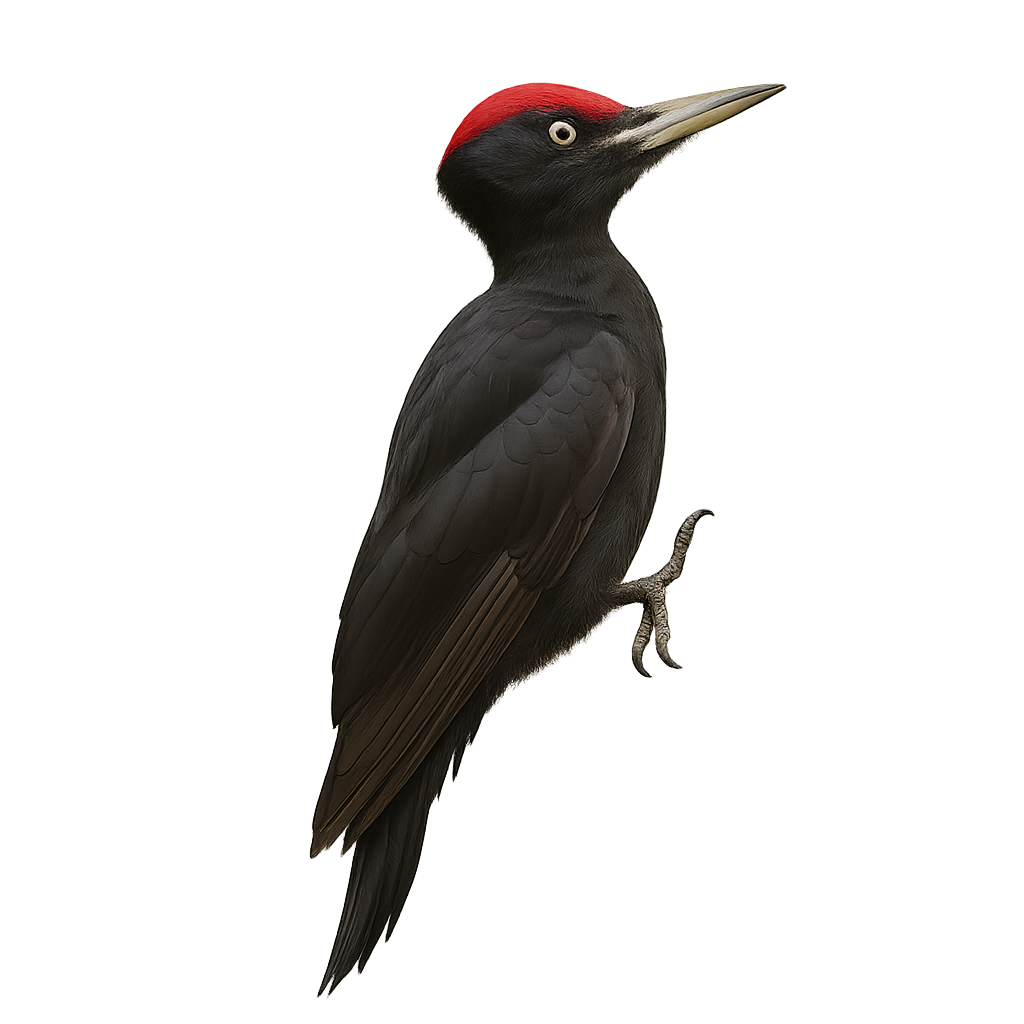Your wildlife photography guide.
Explore the black woodpecker in detail, study its behavior, prepare your shots.
Where to observe and photograph the black woodpecker in the wild
Learn where and when to spot the black woodpecker in the wild, how to identify the species based on distinctive features, and what natural environments it inhabits. The WildlifePhotographer app offers tailored photography tips that reflect the black woodpecker’s behavior, helping you capture better wildlife images. Explore the full species profile for key information including description, habitat, active periods, and approach techniques.
Black woodpecker
Scientific name: Dryocopus martius

IUCN Status: Least Concern
Family: PICIDAE
Group: Birds
Sensitivity to human approach: Suspicious
Minimum approach distance: 20 m
Courtship display: February to April
Incubation: 12-14 jours
Hatchings: April to May
Habitat:
Forests and woodlands
Activity period :
Primarily active during the day, with peak activity in the morning and late afternoon.
Identification and description:
The Black Woodpecker is a large bird from the woodpecker family, primarily found in deciduous and mixed forests of Europe, Asia, and North Africa. It measures between 45 and 50 cm in length, with a wingspan of 60 to 70 cm, and weighs between 250 and 300 g. Its plumage is entirely black, except for its ivory-colored bill. In females, a red patch adorns the top of the head, while in males, the red patch extends from the top of the head down to the nape. The Black Woodpecker is an excellent climber and a skilled driller, primarily feeding on insect larvae, arthropods, and sometimes small mammals found under tree bark. It prefers mature, well-established forests, where it creates large holes in search of food. While its population remains relatively stable, the Black Woodpecker is sometimes threatened by deforestation and habitat loss.
Recommended lens:
400 mm – adjust based on distance, desired framing (portrait or habitat), and approach conditions.
Photography tips:
Approach slowly and discreetly: The Black Woodpecker is a rather solitary and often shy bird, so it is essential not to frighten it by approaching too abruptly.
Favor soft light: Photograph early in the morning or late in the day to capture softer light and the details of its shiny black plumage.
Capture the drilling moment: The Black Woodpecker uses its powerful claws and beak to drill into tree trunks. It’s a fascinating behavior that provides dynamic and interesting images.
Be patient: This woodpecker can spend a lot of time foraging for food, so wait quietly for it to position itself for a natural shot of its activity.
The Black Woodpecker is a protected species in many areas, and its forest habitat is declining. Respect its territory and do not disturb its nesting or foraging sites. Be discreet and follow local conservation rules to preserve this fragile species.
The WildlifePhotographer App is coming soon!
Be the first to explore the best nature spots, track rutting seasons, log your observations, and observe more wildlife.
Already 1 439 wildlife lovers subscribed worldwide

